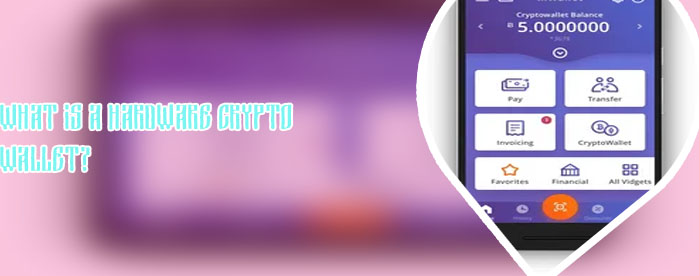
Creating a crypto wallet is a crucial step for anyone looking to enter the world of cryptocurrency. By understanding the step-by-step process of setting up a crypto wallet, individuals can secure their digital assets and engage in secure transactions. To help you get started on this journey, we have compiled a list of three articles that will guide you through the process of creating your very own crypto wallet.
The Ultimate Beginner's Guide to Setting Up a Crypto Wallet

Cryptocurrency has taken the financial world by storm in recent years, offering a decentralized and secure way to store and transfer assets. One crucial aspect of engaging in cryptocurrency transactions is setting up a crypto wallet. For beginners looking to dip their toes into the world of digital assets, a comprehensive guide is essential to navigate the ins and outs of this process.
Setting up a crypto wallet can seem daunting at first, but with the right guidance, it becomes a straightforward task. By following step-by-step instructions, beginners can create a secure wallet to store their digital currencies safely. These wallets come in various forms, including hardware, software, and online options, each offering different levels of security and convenience.
One practical use case of setting up a crypto wallet is for individuals who wish to invest in multiple cryptocurrencies. By having a designated wallet for each digital asset, investors can easily keep track of their holdings and make transactions efficiently. With a well-organized wallet system, users can monitor their investments closely and capitalize on market opportunities.
In conclusion, "The Ultimate Beginner's Guide to Setting Up a Crypto Wallet" provides invaluable information for newcomers to the world of cryptocurrency. By following this guide, beginners can enter the digital asset space with confidence and security, setting themselves up for success in their investment journey.
Step-by-Step Instructions for Choosing the Right Crypto Wallet for You
Choosing the right crypto wallet is a crucial decision for anyone interested in entering the world of cryptocurrency. With so many options available in the market, it can be overwhelming to make the right choice. That's why having a step-by-step guide to navigate through this process can be incredibly helpful.
First and foremost, it is essential to understand the different types of crypto wallets available. There are hot wallets, which are connected to the internet and more accessible for daily transactions, and cold wallets, which are offline and provide added security for long-term storage. Depending on your needs, you'll have to decide which type suits you best.
Next, consider the level of security you require. Some wallets offer multi-factor authentication, while others have built-in encryption features. It's important to choose a wallet that prioritizes security, especially if you plan on storing large amounts of cryptocurrency.
Furthermore, take into account the user interface and compatibility of the wallet. A user-friendly interface will make it easier for you to navigate through your transactions, while compatibility with different operating systems ensures that you can access your wallet from various devices.
In conclusion, choosing the right crypto wallet is a significant decision that can impact the security and accessibility of your digital assets. By following these step-by-step instructions, you can make an informed
Top Security Tips for Safeguarding Your Crypto Wallet
Cryptocurrency has become a popular investment option for many individuals around the world. However, with the rise in popularity of cryptocurrencies, the risk of cyber attacks and theft has also increased. It is essential for cryptocurrency holders to prioritize security measures to safeguard their digital assets. Here are some expert security tips to help protect your crypto wallet:
-
Use a Hardware Wallet: Consider using a hardware wallet to store your cryptocurrencies offline. Hardware wallets are considered one of the safest options for securing your digital assets as they are not connected to the internet, making it harder for hackers to access your funds.
-
Enable Two-Factor Authentication: Two-factor authentication adds an extra layer of security to your crypto wallet by requiring a second form of verification, such as a code sent to your mobile device, in addition to your password. This can help prevent unauthorized access to your funds.
-
Keep Your Private Keys Secure: Your private keys are essentially the keys to your cryptocurrency wallet, so it is crucial to keep them secure. Avoid sharing your private keys with anyone and consider storing them in a secure location offline.
-
Regularly Update Your Wallet Software: To ensure that your crypto wallet is protected against any potential vulnerabilities, it is important to keep your wallet software up to date. Developers often release updates to
